Christmas Gifts From Mexico
A brief overview of some of the handmade Mexican gifts we gave people this year for Christmas
Merry Christmas! Today’s entry is about gift giving and, in the spirit of the holiday, is also free to read for all readers. Paid subscribers will also get an additional third post this week (to ensure they get their money’s worth) and if you’d like to sign up yourself you can do so below.
As I wrote in this past week’s free entry about the Oaxacan stuffed toys called Tivichis, this year we headed back to the U.S. from Mexico for Christmas and are spending first some time with my family in New Hampshire and then we head to Montana to spend a few days and New Year’s with Andrea’s family. In both cases we’ll be loaded down with gifts for friends and family.
We take gift giving very seriously, and it’s a skill I definitely inherited from my family. Both of my parents are thoughtful gift givers, and I think that’s not an ability everyone has.
Gift giving requires a complicated calculus. Not only do you need to know what a person might find pleasing, you need to consider things like cost; need; seasonality; style (and the degree to which style is passing); and uniqueness. For that reason I love giving people consumables, which tend to be both immediately pleasing and are made all the more special by the fact that the enjoyment is ultimately fleeting. But what tends to be true of almost all the gifts we give people are that they come from our travels, and whenever we go somewhere we make a point of filling our suitcases with future gifts for friends, family, and the people we love.
Living in Mexico has given us access to an astounding range of potential gifts, and what’s even better is that they’re locally produced, almost always made by hand, and not widely available. The gifts we brought home from Mexico this year, in some cases, would be found exclusively in not just Oaxaca, but our particular corner of the state.
As time goes on I expect, more and more, I’ll be showing you the things that we’ve acquired for our house, but I appreciate that carries some danger with it. My mom always says about travel writing that “nobody wants to see your fabulous vacation,” and I think that also applies to showing people the wonderful things you own. To be sure, there’s a fascination with seeing how someone else lives—I think that’s at least one reason why people read this newsletter—but in a world where the divide between privilege and poverty grows deeper not just by the day but by the moment, highlighting privilege and wealth is ever more grotesque. So to show someone what you’ve received for Christmas firmly straddles the line between fascinating and tacky.
But I think an exception to that is showing people what you bought for others, especially when those items come from small business owners, or people who make things from scratch. What follows below are a few of the things we’ve bought locally for others, with a brief description of what they are and who we bought them from. I’m character limited here and won’t be able to provide full descriptions of each item, so if you want to know more about them (including how you can buy them for yourself) please comment on this post and I can get you more information and even potentially connect you with the maker/seller.
These small handmade wooden utensils came from Ehren, a Canadian expat who has lived in Oaxaca for a decade. Ehren and her husband Erick, a Oaxacan who runs a climbing gym and the Oaxacan craft brewery Ammon, have become friends, but it was Ehren’s online shop Hecho which first led me to get in touch with her.
Ehren’s goods come from all across Mexico and she works directly with craftspeople, many of whom are women and indigenous, sourcing incredibly high quality goods. The craftspeople she works with set their own prices, a practice which helps with equity, and Ehren sells both as a wholesaler and directly. She was gracious enough to let me poke around the inventory she keeps in her home and I came away with many gifts for people, including this range of small serving ware.
Oaxaca has a wide range of wood available, ranging from the most common, pine (pino), to exotic hardwoods like huanacastle (also spelled/called guanacaste, huanacaxtle, and parota) and tzalam. These are a mix of woods, but I think the spoon on the left is huanacastle.
This jar of seasoned salt is from the Mexican brand Früvethy but was purchased from La Miscelánea, a small shop in Oaxaca de Juárez. A miscelánea is a type of small store which sells a range of goods typically along the lines of packaged cookies, mops, dog food, and random (often inexpensive, but low-quality) stuff. So this shop, run by a midwest expat named Rebecca, is humbly named given that it carries a truly phenomenal range of beautiful plants, plant pots, organic cosmetics and home goods (like brushes and soap), packaged consumables, and fresh Mexican-made cheese and charcuterie. This bottle of salt is seasoned with chile de agua, a type of heirloom chile pepper from Oaxaca that I’ve never seen outside of the area.
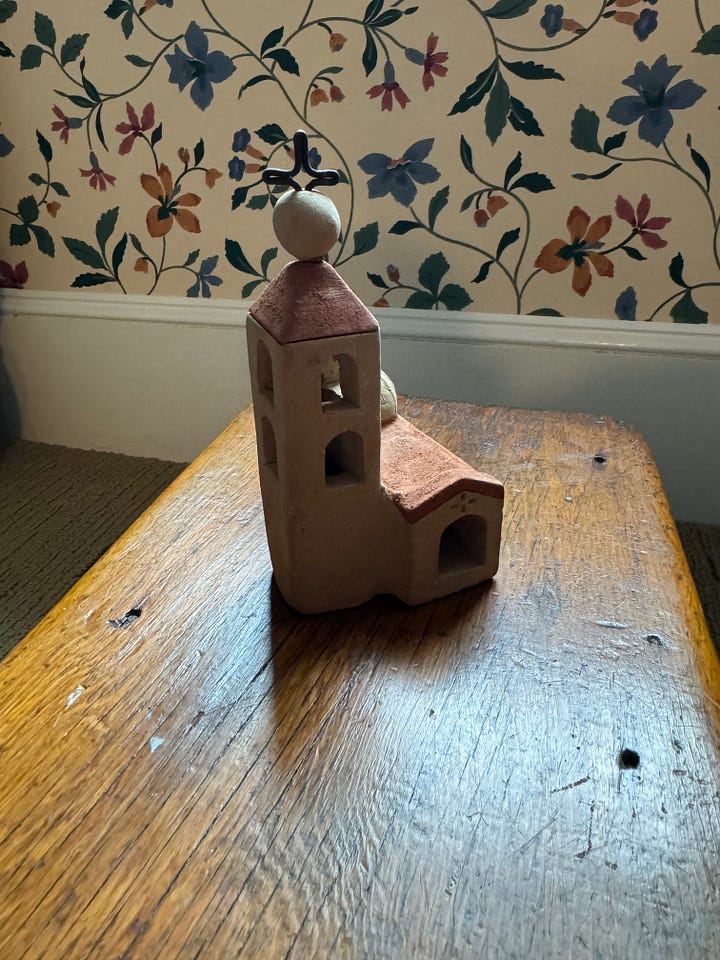
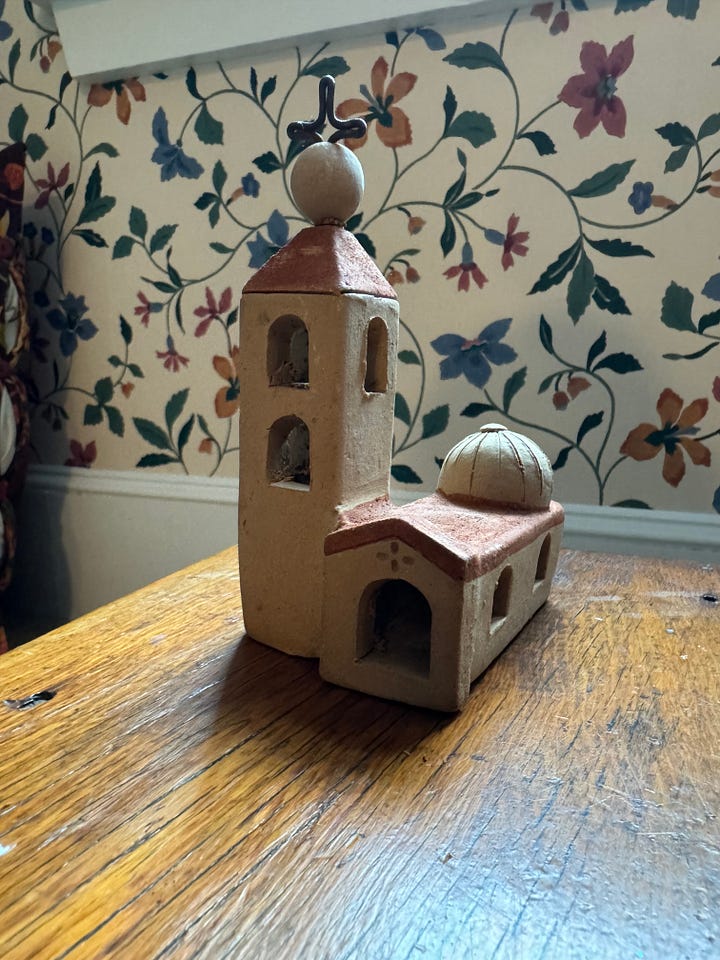
This small, handmade clay church was purchased at Barros de México, the plant pot (maceta) shop I wrote about for one of my very first posts in this newsletter. It’s a small thing, intended for putting inside of a plant pot or nestling inside of a garden. Barros sells a great many churches, in various sizes and configurations. You could build an entire ecclesiastical compound if you wished.
This handwoven scarf is from Textilera de Manantial, the same shop that makes the stuffed tivichi toys. Most weaving in Oaxaca is done using synthetic dyes, and that’s the case with this scarf, but that’s also not inherently a bad thing. Manufactured dyes keep their color really well, don’t bleed when washed, and are a lot cheaper to make. Natural dyes, on the other hand, are more expensive, time-intensive for the maker, and require either foraging or buying expensive gathered goods, such as botanicals like cempesúchil (marigold) or cochineal (red insects which are crushed to obtain their coloring). Natural dyes also fade over time, and especially in the sun. But the colors are vibrant and naturally-dyed items are a bit more of a lux product.
This scarf is nice, long, has a pleasant texture, and was handmade on a wooden loom.
This is a jar of salsa macha, a type of salsa that many people in the U.S. might not be familiar with. Salsa macha is oil-based and gets its color, typically, from either ground or chopped dried chiles, and usually has ingredients such as chopped nuts (cacahuates—peanuts—are common), sesame seeds (ajonjoli), salt, and occasionally sweet items like raisins. I’ve never made this type of salsa from scratch but based on the color and taste I think it’s made very similarly to how one would make chile oil for Chinese cooking: heat the oil until around 350 degrees F and pour over the chiles and other ingredients, which both toasts them and helps to infuse the oil with flavor and color.
This jar is from a shop called Suculenta, a lovely little boutique which sells a huge range of bottled jams, salsas, and pickles, a variety of extraordinarily expensive home goods like bowls, plates, and carved spoons, some rather sad looking fresh vegetables, and a limited selection of alcohol. It’s a shop associated with a phenomenally popular bakery/restaurant called Boulenc. Boulenc bakery is wonderful (the pastries are particularly outstanding) and Boulenc restaurant is lackluster, serving a variety of non-Mexican foods, such as a banh mi, none of which seem to be prepared correctly. The jarred stuff is great though.
We’re lucky to have access to an amazing assortment of handmade goods at prices Americans would find exceptionally affordable. If you find yourself in Mexico and want to support small businesses, seek out artisans selling their own goods, or go to shops like the ones run by our friends Ehren and Rebecca. You also shouldn’t negotiate: when sold directly by makers prices often do not include a tourist markup, and Mexican artisans take a shockingly small profit for the things they make. As is true anywhere in the world, just try to shop locally.

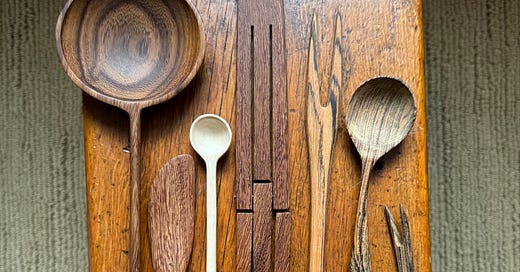



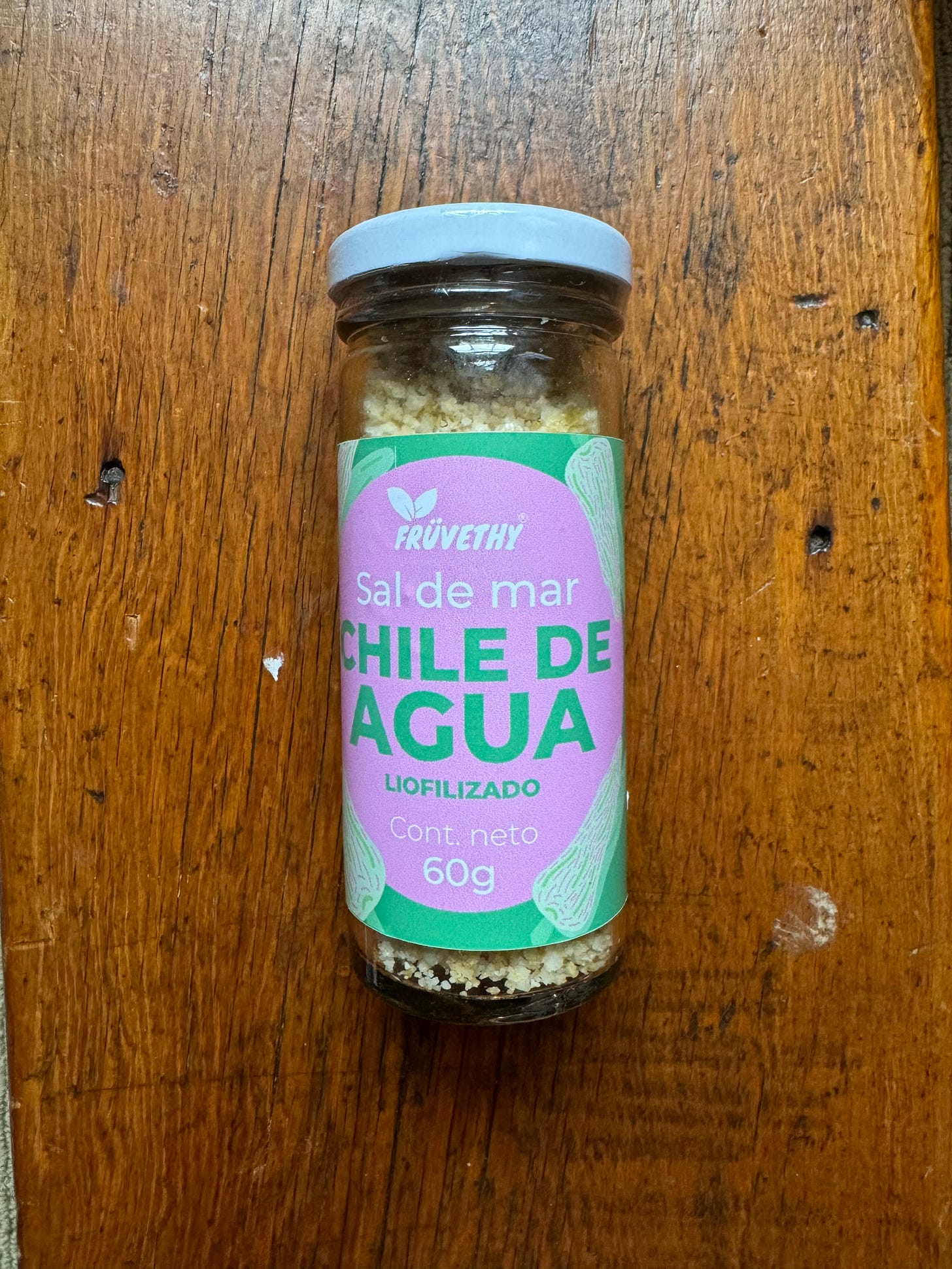
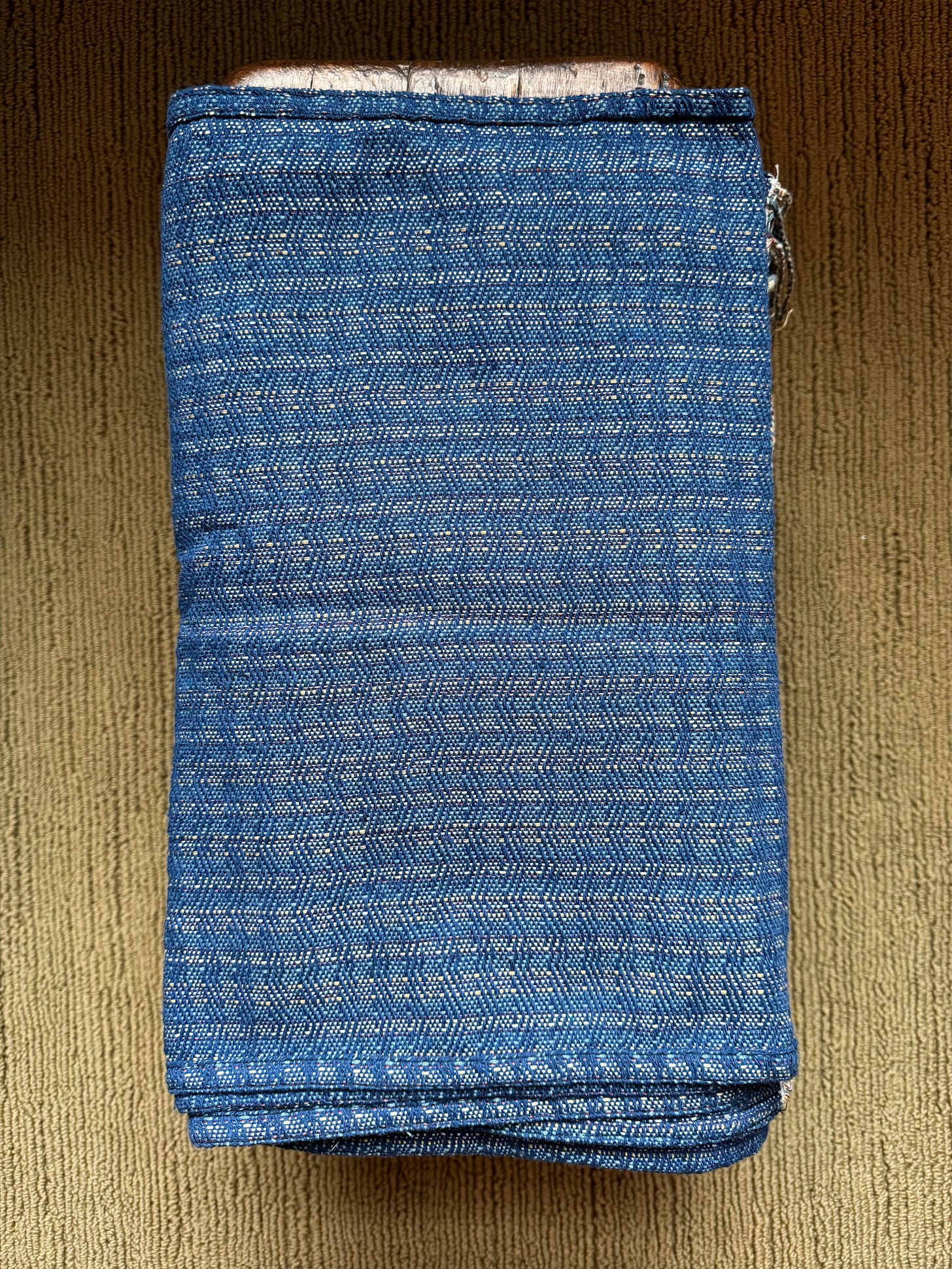

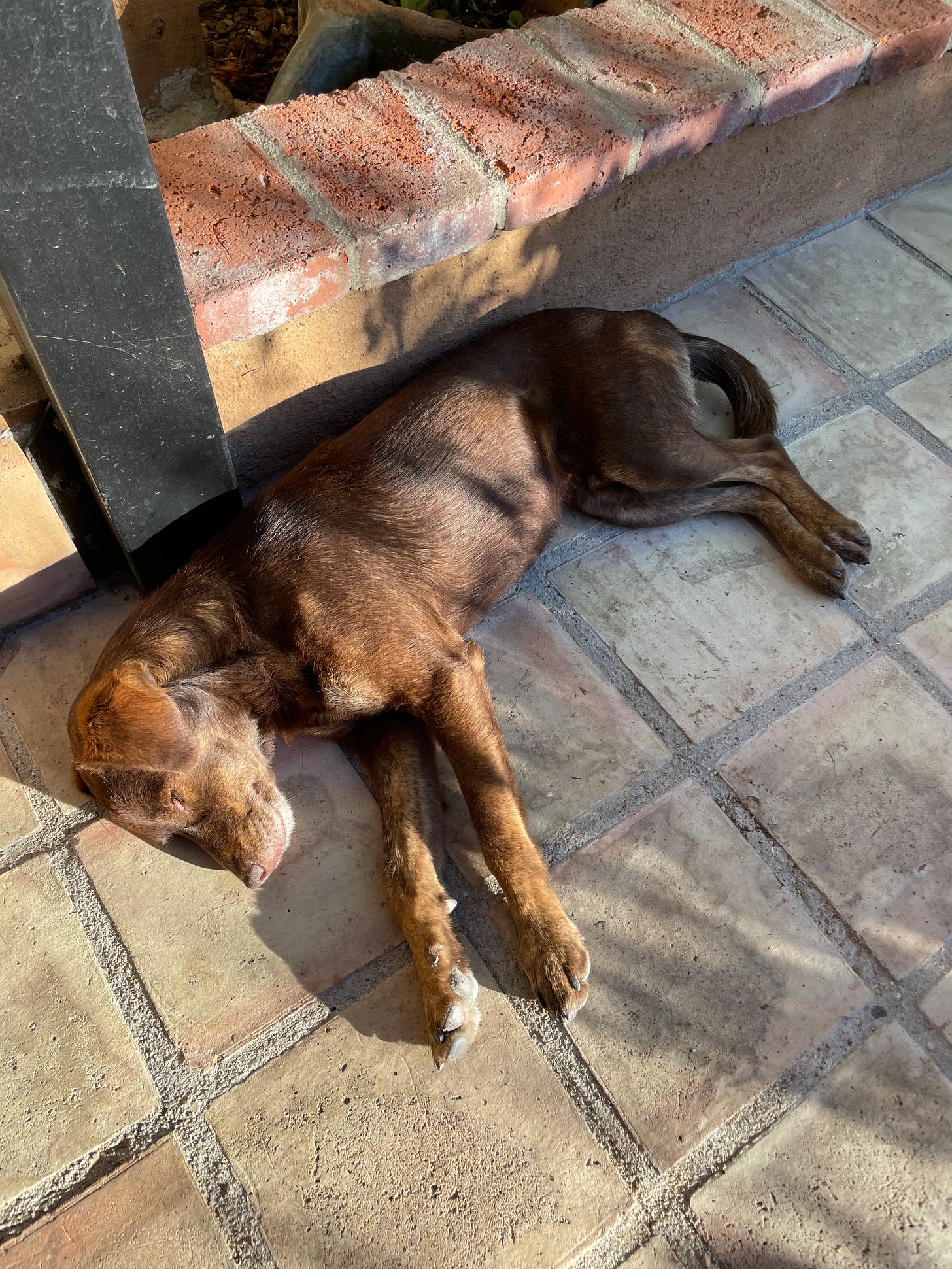
I am surprised not to see any small brightly painted wooden carved figures, we were in Santa Fe, NM, which claims to be a sister city to Oaxaca (though that seems now to be a misnomer since from reading your posts I have come to realize Oaxaca is a region and not a city), and in NM they had a lot of these fun and pretty carvings which they said were Oaxaca. I am very fond of the ones we have.
Oh, and by the way, I just love that you send us a picture of one or both doggies at the end of every post. Look forward to that each time.
Enjoy your family time!
I’ve been to Boulenc, pretty good flourless chocolate cake, but yeah, wouldn’t buy any of that other stuff.